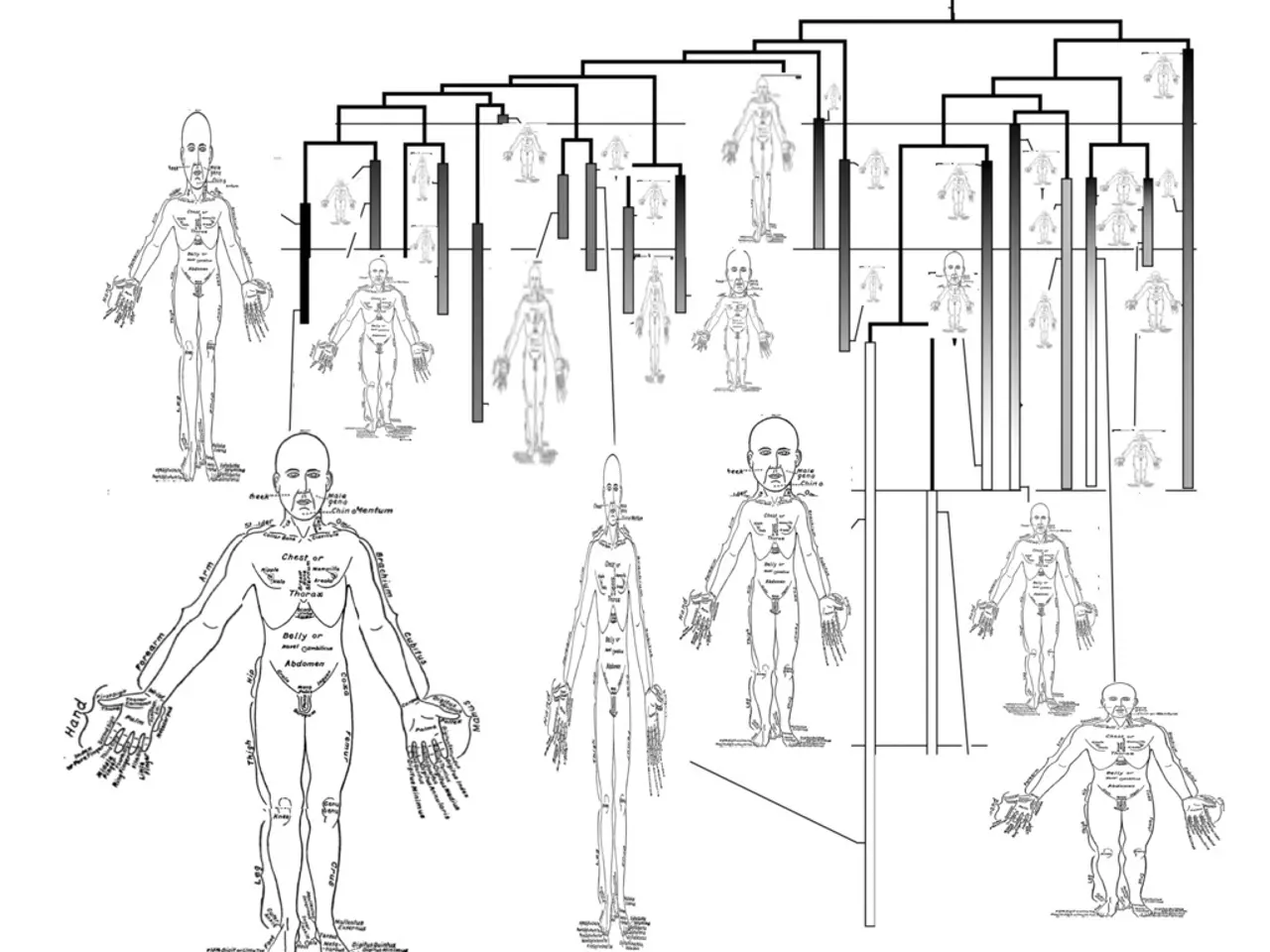Enzymes: Their Role, Description, and Illustrative Applications
In the intricate dance of life, enzymes play a pivotal role as biological catalysts, speeding up chemical reactions essential for life. These proteins or RNA molecules are found in every cell of the human body, performing around 5,000 different functions[6].
### Key Functions of Enzymes
One of the primary roles of enzymes is in the digestion process, where they break down complex food molecules into smaller, absorbable nutrients. For instance, amylase breaks down carbohydrates into sugars, while lipase and protease break down fats and proteins, respectively[1][2].
Enzymes are also integral to metabolic processes within cells, facilitating chemical reactions that maintain life. Metabolic enzymes such as DNA and RNA polymerase are crucial for genetic material synthesis and other cellular processes[3][5].
### Types of Enzymes and Their Roles
Enzymes can be categorised into several types based on their functions. These include oxidoreductases, transferases, hydrolases, lyases, ligases, and isomerases[4]. For example, amylase is a hydrolase that breaks down carbohydrates, while DNA polymerase is a nucleic acid enzyme that synthesises new DNA molecules.
Enzymes can also be classified based on their location of action. Intracellular enzymes function inside cells, involved in metabolic pathways like gluconeogenesis and the urea cycle. Extracellular enzymes, on the other hand, function outside cells, mainly involved in digestion in the gastrointestinal tract[2].
### Enzyme Regulation and Sensitivity
Enzymes are highly specific and regulated proteins, essential for nearly every biochemical reaction in the human body[3]. They are sensitive to their environment, particularly pH levels and temperature. Enzymes in the intestines work best at around pH 8, while enzymes in the stomach work best at about pH 1.5 due to its acidic nature[1]. If the temperature is too high, enzymes change shape and may not function properly. At lower temperatures, enzymes may still work but much more slowly[1].
### Factors Affecting Enzyme Activity
Several factors can limit enzyme activity levels, including competitive, non-competitive, uncompetitive, and irreversible inhibitors. A newer model, the induced-fit model, explains reactions between substrates and active sites that are not exact fits, as the active site changes shape as it interacts with the substrate[7].
### Enzymes in Action: Examples and Applications
Examples of specific enzymes include lipases, amylase, maltase, trypsin, lactase, acetylcholinesterase, helicase, DNA polymerase, and others. The liver uses enzymes to break down toxins in the body, while enzymes help break down complex molecules into smaller ones, such as glucose, for use as fuel[2][5].
In conclusion, enzymes maintain the body's biochemical balance by enabling nutrient breakdown, synthesising essential molecules, and supporting metabolism and repair mechanisms. Each time a cell divides, enzymes help in the process of unwinding the DNA coils for replication. Understanding the role of enzymes in the human body is crucial for understanding the intricate workings of life itself.
References: [1] https://www.britannica.com/science/enzyme [2] https://www.ncbi.nlm.nih.gov/books/NBK224077/ [3] https://www.ncbi.nlm.nih.gov/books/NBK224067/ [4] https://www.ncbi.nlm.nih.gov/books/NBK224088/ [5] https://www.nature.com/scitable/topicpage/enzyme-9781782620446 [6] https://www.ncbi.nlm.nih.gov/books/NBK224077/ [7] https://www.sciencedirect.com/topics/biochemistry-genetics-and-molecular-biology/enzyme-mechanism
- Enzymes play a significant role in various medical-conditions, such as ulcerative colitis and Crohn's disease, by breaking down complex food molecules, aiding in digestion and potentially reducing symptoms.
- In the field of science, research on predictive models for enzymes could lead to improved understanding and management of diseases like obesity, diabetes, and HIV, where enzyme functions are critical.
- In the context of health-and-wellness, maintaining a balance of enzymes in the body is essential, as they help break down nutrients while also supporting the body's metabolic and repair mechanisms.
- Some medical-conditions, such as migraines, have been found to have enzyme imbalances, making enzymatic therapies a potential area of investigation for future treatments.
- NSCLC (non-small cell lung cancer) tumor growth is influenced by certain enzymes, prompting the development of enzyme inhibitors as potential therapeutic approaches in cancer treatment.
- Intracellular enzymes like AQ (Adenosine Quinase) are linked to various disease mechanisms, such as inflammation in asthma and certain autoimmune diseases, making it a target for drug development in those medical-conditions.




